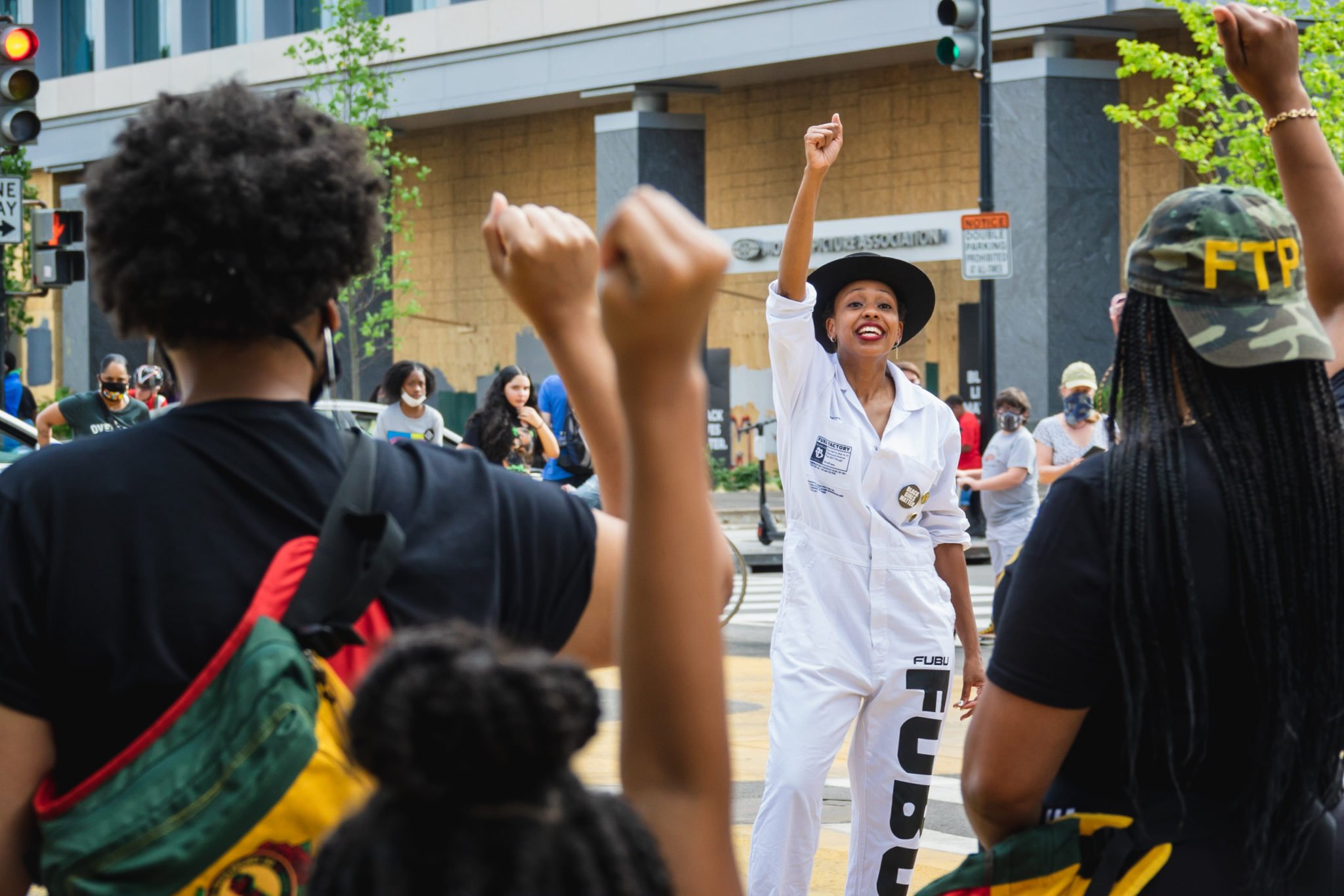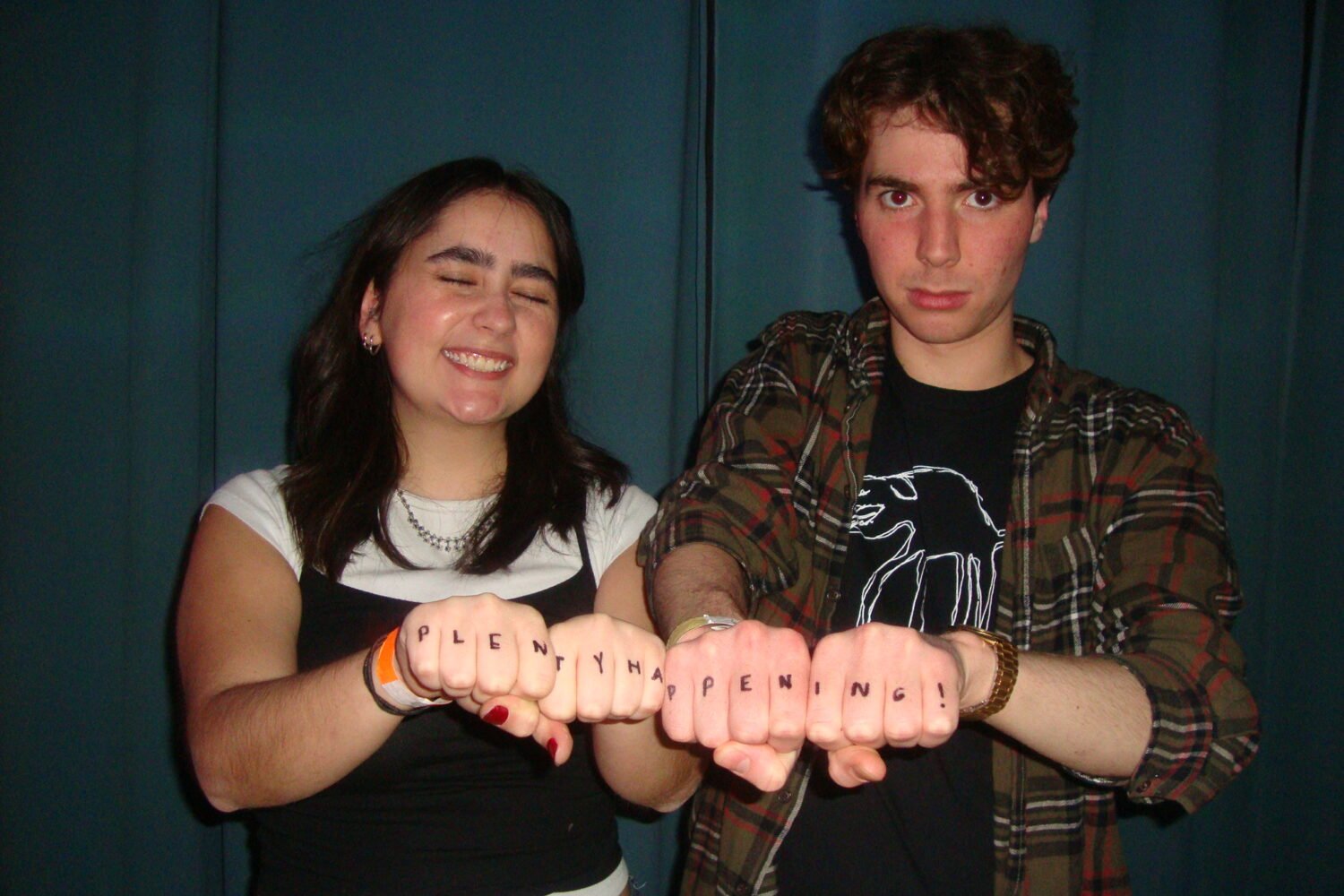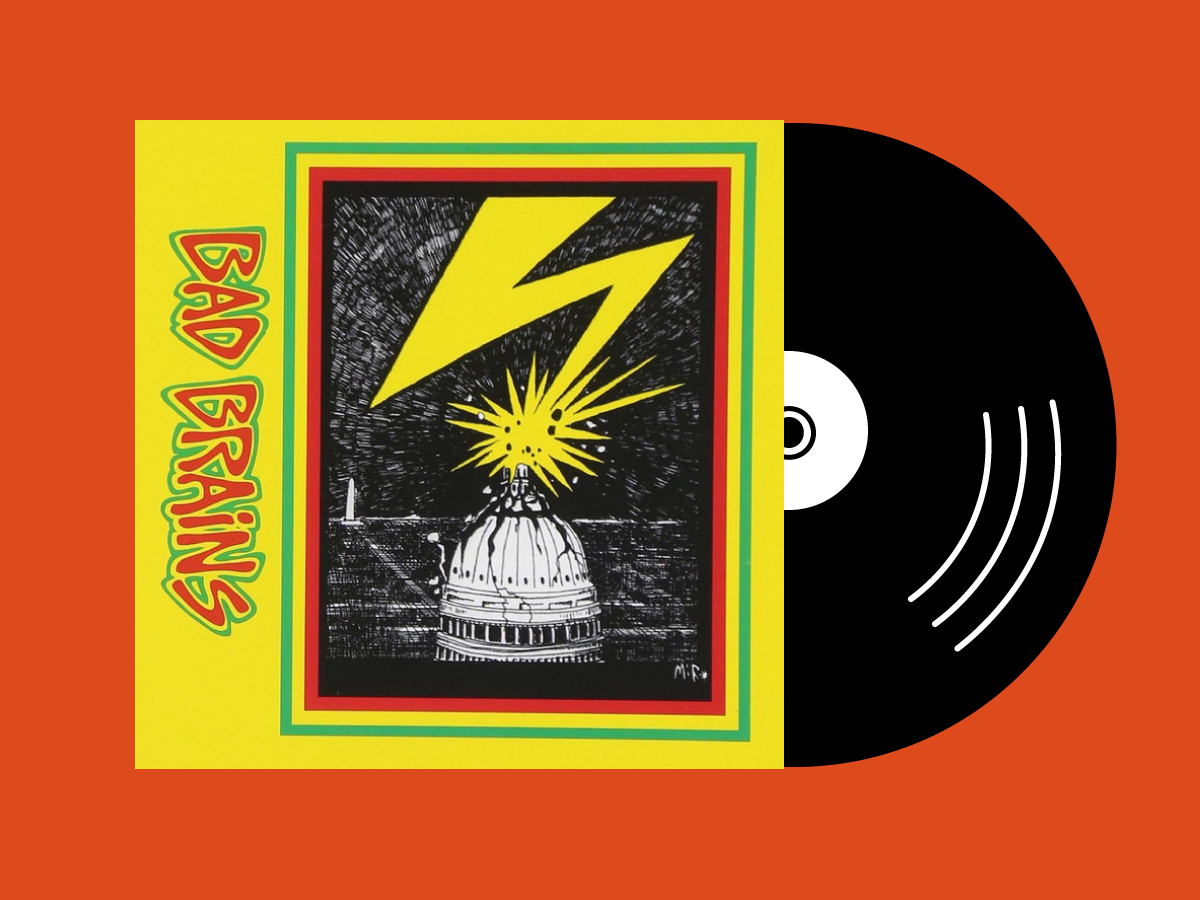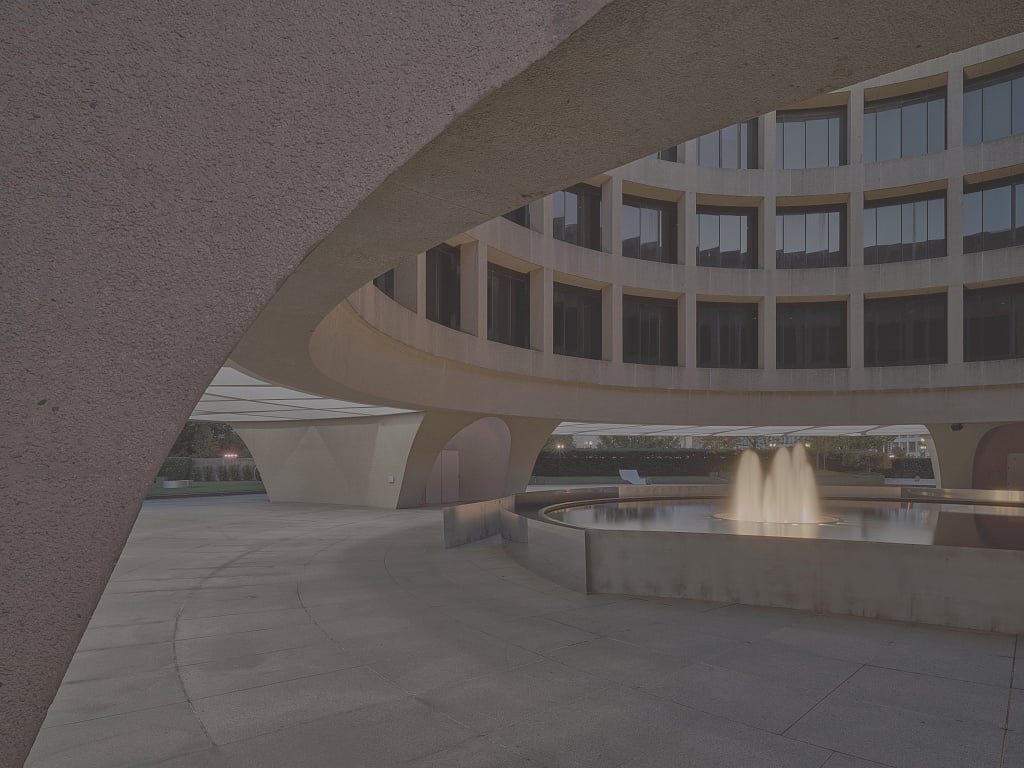OnRaé LaTeal has been making activism-driven music in DC for many years, but her latest video has received more attention than ever before. A Howard grad who is now a Journalism and Media Arts educator, LaTeal recently shot the video for “Middle Finger to the Law” at the spot near the White House that the city has renamed Black Lives Matter Plaza. The song, which will appear on her forthcoming album, Black Joy Experience Vol. 2., was inspired by the recent protests over the killing of George Floyd.
Tell me a little about yourself and your music.
I am a music producer, videographer, and creative arts educator. I like to call myself a Liberation Music Maker because most of the music I produce is made to support the movement for Black lives. I am mostly known for transforming sounds from the movement into contemporary music. One of my latest musical works includes the Black Joy Experience, a musical compilation album of freedom songs and liberation chants I produced in partnership with the national member-based organization Black Youth Project 100.
How do you approach your work?
My favorite artist quote is by Nina Simone, who once said, “it is an artist’s duty to reflect the times that we are in.” So as of late, I have been using my superpowers to create an audio/visual soundtrack highlighting the DC community’s response to the murders of Black people by state sanctioned violence across the nation. My music videos include footage from direct actions held by organizations like Black Lives Matter DC, Black Youth Project 100, Freedom Fighters DC, and local community activists. I normally attend these organizations’ protests to capture audio/video footage and later produce a musical track (or liberation chant remix) that embodies the overall mood and emotions I observed from participating protestors.
I refer to my chant remixes as “fight songs” because the goal is to get you amped up to enter revolutionary combat. Whether your fighting is done through writing legislation, attending a protest, facilitating healing circles, leading dance classes for youth of color, or resting in Black joy, I want my music to get supporters ready to battle fearlessly for the complete liberation of all Black people.
As a Black, queer woman, I want the stories that are later told about this moment in history to include the audio/visual soundtrack I am creating. I feel that it’s necessary for those stories to come directly from the perspective of someone who is intimately affected by and fighting against systemic oppression.
The lyrics for this composition are based on a chant used during the recent protests?
Most recently, I created a hip-hop remix to my favorite liberation chant, “Middle Finger to the Law.” I was previously introduced to this chant through Black Youth Project 100 while attending a few of their direct actions. It was during these moments when I noticed that the chant was clearly an entire vibe.
Every time I hear this chant at a protest, it gets people so hype and lifted that the energy in the space immediately goes from 0 to 100. Considering the recent demand from several Black organizers nationwide to defund the police, I wanted to support my comrades’ call to action by creating a fight song to amplify their demand.
Since the chant is already so igniting when performed a cappella, I knew that I needed to create an accompanying instrumental that could either match its energy or just completely send people’s adrenaline level into outer space. From what I’m hearing from my comrades since releasing the music video, it seems that I did a pretty good job!
Can you speak about your process as an artist?
I am a classically trained instrumentalist who attended Suitland High School’s Center for Visual and Performing Arts, so that training really supports my composing abilities. I normally pray before sitting down to create, just to simply ask for musical ideas and a clear mind. My creating always comes best when I’m resting in a positive spiritual space. On the other hand, I’m super competitive, so my creative brain gets super active when I’m being challenged by what I like to call an “evil nemesis.” Oddly, a good deal of my best works have come from a competition I have conjured up with a fellow artist in my head.
What was it like performing this song in Black Lives Matter Plaza in the video?
Shooting the video at BLM Plaza was incredible! I hit up a couple comrades from Black Lives Matter DC and Black Youth Project 100’s DC Chapter and they basically brought out their whole squad to support. When I started to set up my equipment, there were about five young men hanging out so I asked them to help me set up because I was shooting a music video. They were super hype to help and asked me over and over again if they could make a cameo appearance. I didn’t know that the small group of five would turn into an entire crowd!
The great thing about BLM Plaza is that it has basically turned into a mural where everyone wants to visit and take selfies. So mural visitors began congregating around us while shooting. What started out as a music video shoot quickly transformed into a Black joy community event, which is in complete alignment with the album’s mission. I received countless requests from people passing by to join in so you’ll see more than a few people just partying and vibing with me and the organizers in the video. At one point I just said, “Okay! Everyone jump in!” It was really just to accommodate everyone. I didn’t want anyone to feel left out. The energy was just so positive and affirming.
I am a long-time educator—I’m always making it a point to include youth in my work. I reached out to a local dance troupe called the Silver Starlets, a young LED mask designer and skateboarder named FRO LITES, and an amazing hip-hop ballerina named Nya C. They all came prepared with routines and brought along so much young Black joy to the shoot.
The video is very striking, particularly the use of your own body, clothing, and finger nails to represent the movement. The beginning shot of your collar is something I’m still thinking about after seeing it.
For my “Middle Finger to the Law” video, I wanted to wear a statement piece that plainly symbolized Black culture and Black history in the boldest and most overt way possible. Every Black person born in the ’90s is familiar with the hip-hop clothing brand FUBU. The brand was and is not only Black owned, but their slogan, “For Us, By Us,” basically made the brand feel super exclusive to Black people. My amazing artist friend Nia Keturah is reigniting the brand using art activism. She has basically developed FUBU WORLD, a distant galaxy that Black people can escape to and rid themselves of the chains of white supremacy. In FUBU WORLD everyone rocks FUBU gear, especially the FUBU jumpsuit you see me wearing in my music video.
My fingernails design was definitely intentional. I knew that I wanted my camera person and videographer, Teddy Gee, to grab multiple close-up shots of me beat mixing during the shoot, which meant that my hands would ultimately be the main attraction. So I figured it would be crazy cool to do something that would make people look once, look twice, then have to ask, “What do your fingernails say?” I was asked countless times during the shoot! Getting the letters to spell out DEFUND MPD on my nails was simply to drive home the overall messaging of the song in a non-traditional way.
It was also funny getting the letters painted on. Judy, my nail technician, had to basically turn my hands upside down while painting to make sure the letters read correctly on camera. She asked me to explain DEFUND MPD to her after she was done. My simple response was, “LESS MONEY FOR THEM, MORE MONEY FOR OUR COMMUNITY!” I promise I didn’t yell at her, but that’s how it came out in my head.
What would you describe as your role in the movement for change in Washington?
I consider myself a Liberation Music Maker who uses my beats to fight for the freedom of all Black people. Most importantly, I am a longtime advocate for youth. As a creative arts educator based in the District, I’ve worked with organizations on a local, national, and international level to serve young people over the last eight years. Whether it is teaching in the classroom or hosting community events, I’ve always been dedicated to serving and developing youth artistically in our city.
I’m specifically interested in designing creative spaces for girls of color. I work with schools and youth serving organizations across the city through my grassroots program, Black Girls Handgames Project (BGH). The project revitalizes age-old games such as Miss Mary Mack, Gigolo, and Rockin’ Robin with soulful hip-hop remixes created by and featuring Black women and girls. As the co-founder of BGH, I use the project to elevate gender equality in the field of music production by teaching teenage girls fundamental skills in beat-making.
I’ve also spent years creating spaces for youth of color to gain access to mentorship and training in STEAM (science, technology, engineering, arts, and mathematics) career fields. A lot of my work as an educator and community organizer for youth involves producing high-quality learning opportunities and curating community-driven events offering teens in the city the platform to showcase their creative works to thousands of DC, Maryland, and Virginia community members.
There is an obvious joy in the music video, while being linked to resistance. Can you talk a little bit about how those emotions coincide and come together for you?
I often say that Black joy is a form of resistance because it is something that we aren’t always entitled to. It is no secret that Black people have faced centuries of trauma and abuse. Today, Black women like Breonna Taylor can be murdered by law enforcement while sleeping peacefully in their homes. Black men like George Floyd can be killed by police officers after not being granted a simple breath of air for over eight minutes. These mere facts are a means for Black people to be everything except joyful. However, we as Black people seem to find a way to center ourselves in joy. As stated in a 2017 Black Youth Project article by Imani Jackson, “We have always been people who prioritized joy. Joy gives us love, family, art, music and resilience.” So even during a tumultuous time such as this in our country, I find myself using my art to combat oppressive systems, but most importantly to support my people in reclaiming the joy that we deserve.
Has there been a particular moment from the last couple months of protests that was especially meaningful to you?
I’ve been to more than a few protests over the last several months, some with hundreds of people marching alongside me. One where I even experienced being pepper sprayed for the first time. However, the most significant moment I experienced was during a children-led protest hosted by Kendra Johnson, founder of the self-care and community movement Tribe Healer. The protest involved no more than 20 people, 75% being children. The youngest was being pushed in a stroller by their mother, and the oldest was about nine years old.
The children marched down MLK [Avenue] with their handmade signs, holding hands and yelling, “We are black! We are strong! Our lives matter!” While it may not have been as high profile with the press and hundreds of people in attendance, this march was the most memorable for me because this is the day that I came to a crucial realization. It is our duty to use everything within us to make sure that these babies don’t have to step foot onto this battle field with us ever again. We fight so that our kids won’t have to.
Anything else you would like to add?
I want for all my Black fellow creators to know that you have the power to make a difference. Don’t be afraid to create and share your work. This is not the time to be shy or feel that you’re interrupting the movement. Create with a purpose to support the movement for Black lives. Whether it’s music, video, photo, fashion, event curation, blogging, cooking, teaching, dance, hair styling, or wherever you feel your gifts may lay, be bold and unapologetic. We need you and your talents now more than ever. I’m here with you. We are in this fight together.



















